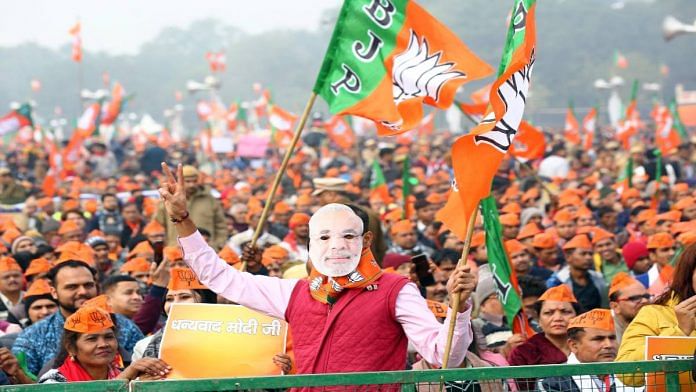Thank you dear subscribers, we are overwhelmed with your response.
Your Turn is a unique section from ThePrint featuring points of view from its subscribers. If you are a subscriber, have a point of view, please send it to us. If not, do subscribe here: https://theprint.in/subscribe/
The political battleground of India is shifting rapidly, and nowhere is this more visible than in the way young people consume information. The new generation reads fewer newspapers, watches less television news, and instead relies heavily on social media platforms – especially Instagram – for updates, ideas, and even political cues. Memes, reels, and short-form content are not just entertainment for them; they are tools of information and opinion-building.
The recent success of the film Saiyaara, which became a cultural phenomenon primarily through its Instagram promotions, is a prime example of the platform’s power to shape narratives and drive mass engagement. What films and brands are achieving through Instagram, politics too must embrace – particularly a party like the Bharatiya Janata Party (BJP), which faces crucial electoral contests in the coming decade.
Youth and the Rise of Social Media Politics
India’s youth, comprising nearly two-thirds of the population, are shaping political preferences differently than previous generations. Traditional mediums such as newspapers and lengthy debates are giving way to memes, short reels, infographics, and influencer-driven campaigns. A viral post, a humorous meme, or a compelling reel often reaches millions faster than any press release.
This means that young voters in Uttar Pradesh ahead of the 2027 Assembly election—and across the country for the 2029 Lok Sabha election—will make their decisions not just by attending rallies or reading manifestos, but by what they encounter daily on Instagram, YouTube, and other social media platforms.
BJP’s Digital Gap
Despite being a frontrunner in organizational strength and electoral management, BJP has not fully capitalized on youth preferred social media platforms and meme-based communication. The party still relies heavily on WhatsApp forwards and Facebook posts, tools that were revolutionary in 2014 and 2019 but feel outdated to Gen Z. Youth in Uttar Pradesh, who will be decisive in the 2027 Assembly polls, are scrolling Instagram more than they are scanning newspapers. By 2029, when a new generation of first-time voters comes of age, Instagram will be the political battleground that decides Delhi.
If BJP does not adapt now, it risks walking into 2027 and 2029 with an outdated digital playbook while the Opposition, independents, and even apolitical meme-creators capture the youth’s imagination.
What BJP Must Do Before 2027 and 2029
Memes are not optional: They are the political pamphlets of the youth preferred social media platforms. If the BJP cannot laugh with the youth, it cannot lead them.
Reels must replace rhetoric: Long speeches may draw applause at rallies, but only 30-second reels go viral.Influencers matter as much as karyakartas: Local youth influencers on youth preferred social media platforms are shaping peer decisions. BJP must collaborate, not dismiss. Jobs, start-ups, lifestyle aspirations: BJP cannot keep talking to the youth in the language of the 1990s. Messaging must be packaged in modern, aspirational formats.
Localized Insta-campaigns: From Gorakhpur to Ghaziabad, each district has its own micro-trends. BJP’s social media game must be as localized as its booth-level strategy.
The Road Ahead
India’s politics is no longer decided only in dusty maidans or the morning headlines of newspapers. The new arena of influence is the mobile screen—especially youth preferred social media platforms. For India’s youth, memes have replaced editorials, reels have replaced rallies, and influencers are shaping opinions faster than party spokespersons.
BJP is a formidable election machine, but machines rust if not oiled with new strategies. The party cannot afford to assume that its old digital dominance will automatically translate to new platforms.
This generational shift is not a future trend—it is already here. The 2027 Uttar Pradesh election will be a litmus test for BJP’s adaptability to new-age campaigning. If the party manages to harness youth preferred social media platforms power effectively, it will not only consolidate its dominance in the state but also set the tone for the decisive 2029 Lok Sabha election.
Social media is no longer just a communication tool; it is a decision-making arena for India’s youth. For BJP, the choice is clear—either lead the social media age of politics or risk being outpaced in the very space where the nation’s future voters are making up their minds.
The choice is clear: either BJP reinvents its digital narrative now, or it may find itself surprised when India’s youth, who never saw its message on their screens, silently vote for someone else.
These pieces are being published as they have been received – they have not been edited/fact-checked by ThePrint.


